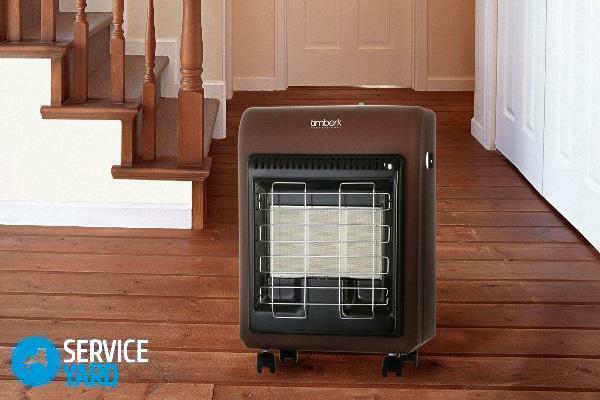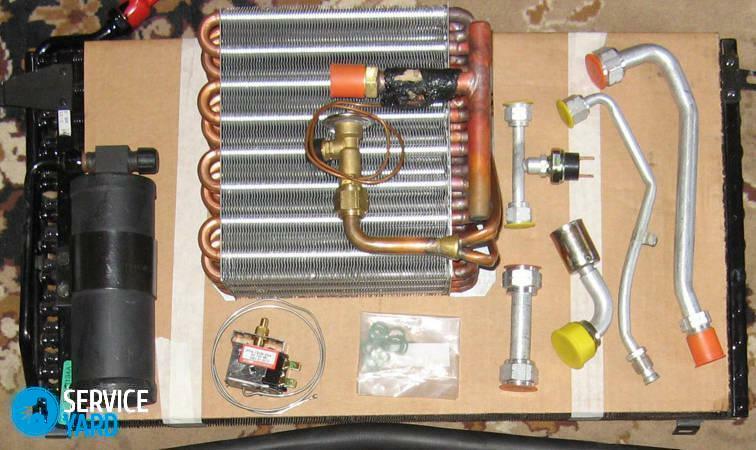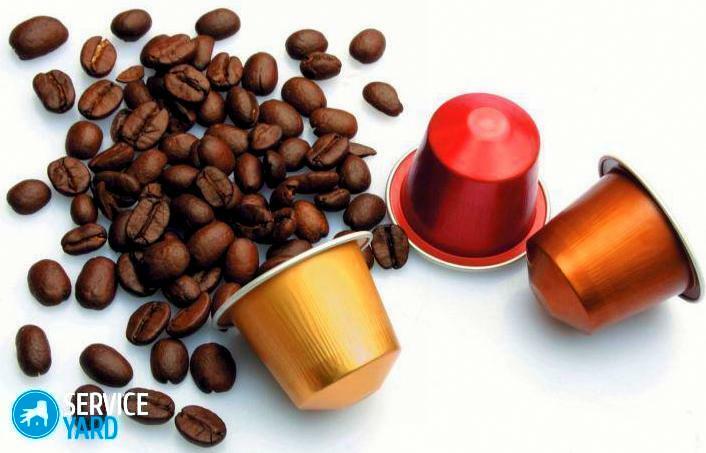Grow ornamental, fruit-culture indoors rather difficult. For good growth of any plant need light and heat. Otherwise greens will grow slowly turn yellow, and the color may not appear at all. Especially dire need room stands in the sunlight in the winter. Experienced gardeners for breeding seedlings of rare and cultures in this period using LED bulbs for plants.
Content
- Plants and light: the need for a backlight
- Advantages and disadvantages of using lamps
- Characteristics of light
-
Types of lamps to illuminate the plants
- Incandescent lamps
- Fluorescent lamps
- discharge lamps
- LED bulbs
-
How to choose a LED fitolamp
- The shape and size fitolampy
- Spectrum and power diodes
- The number of fixtures and installation rules
- How to make your own hands fitosvetilnik
- conclusion
Plants and light: the need for a backlight
For growth and development of all living organisms need energy. Run this process in plants helps photosynthesis. Only under the influence of sunlight the green parts of crops can develop properly. Even if the flower gets enough moisture and nutrients in the form of fertilizer, but a little light - it will look depressed.
Highlighting procedure is carried out in the morning or in the evening, without depriving the natural solar plant at the time of sunrise and sunset. Culture should not be under the artificial lights for more than 12 hours. Determine the need for additional lighting for different types you can use the light meter. Shade will be enough 2000 lux, 2500 lux light-loving satisfied with the condition for increasing the figure to 5000 at the time of setting of buds and blooms. Lemons and oranges will be able to form a bud on a window sill just high illumination - 9000 lux.

To provide illumination lamp may be used various types. Among recommended - discharge, fluorescent, LED. Household incandescent tungsten filament is better not to use. They provide a low intensity light, their bright infrared rays excessively accelerate the growth of culture, making the stems elongated leaves and small.
Advantages and disadvantages of using lamps
The main purpose of the additional illumination - compensation for the lack of sun, good growth stimulation. Installation of such devices is particularly necessary in the early spring, when daylight is still short. The benefits of installing artificial light bulbs over the household the beds are as follows:
- Easy to use. Construction of all types of lamps can be installed by hand. For installation need not have special equipment and certain skills;
- The durability of the instrument. The average service life of high-quality equipment - 50 thousand. hours. With daily use up to 12 hours they will last more than 10 years;
- The ability to adjust the intensity. An important feature that allows you to set the desired brightness of the lighting in different periods of plant growth;
- The direction of light at the right angle. Lighting touches only a certain portion that allows the room temperature remain constant, and seedlings to obtain the necessary heat;
- Aesthetics. Moderate supplementary lighting will fill the room comfort in the autumn, will create a romantic atmosphere;
- Security. Fitolampy absolutely harmless to humans, do not heat above 55 ° C.

All kinds fitolamp have some drawbacks. Minimize the negative impact can be if properly install devices by calculating the angle of incidence of light and brightness. The main disadvantages - excessive pulsation of some types of sources, emission of blue spectrum.
See also:How to arrange a winter garden
Characteristics of light
When growing plants flats wattage way to speed up the photosynthesis does not really matter. Particular attention should be given to the spectrum of devices and their similarity to natural sunlight. The light beam may have a single thread or comprise several waves of a certain length. Plants have a characteristic influence of the following colors of the spectrum:
- Blue, purple. Influence the development of culture, accelerate the growth of herbs, roots, form the splendor of the crown, the new shoots. Stimulation of these rays results in the production of proteins. The backlight for the winter period. wavelength - 380-490 NM.
- Yellow. It does not have any particular influence on the seedlings. Tall culture quickly drawn as with a lack of lighting, are poorly developed leaf apparatus. wavelength - 565-595 NM.
- Red, orange. The process of photosynthesis is run by these colors. You can adjust the speed of growth of cultures, if you change the backlight intensity. Red rays accelerate germination, orange - increases fruiting. wavelength - 600-750 NM.
- Green. Pulls the stems very quickly. They do not have time to get stronger, thinner and fall down the side. Leves formed only in the upper part of the culture. wavelength - 490-565 NM.
- Ultraviolet. It controls the growth, allows time to produce the necessary vitamins. Radiation produces immunity to external influences (temperature change). wavelength - 280-380 NM.

Types of lamps to illuminate the plants
Large assortment of lamps for different types of plants makes them a difficult choice. Before purchasing the appliance must be familiar with its characteristics. It is necessary to determine in advance the purpose of the installation - the cultivation of seeds from the ground up or adjustment of development has green stems. Each model has its advantages and disadvantages.

Incandescent lamps
As a backlight used rarely due to low light output and a large heating. Such devices are generally not recommended to place next to the plants. From a distance lights will not efficiency. Florists used incandescent bulbs to create a favorable temperature conditions in greenhouses, aquarium tanks.
Plants need a backlight for a few hours a day, if Provided on the windowsill pots. But even such a small time operation of the device is very energetically expensive.

If you use the bulb with fluorescent devices, can successfully complement the range of red.
Fluorescent lamps
It is advisable to use in small areas. Standard models do not accelerate plant growth. Photosynthesis will help ensure the device with a two-component phosphor coating and a maximum emission of red, blue color spectrum.
There are domestic and professional devices. When choosing a model, it is necessary to pay attention to the glow range. It must match the specific case: for a full lighting small aquariums for supplementary lighting of individual zones, for greenhouses in combination with additional sources. Fluorescent lamps have the following advantages:
- Provide excellent luminous efficiency with a small power consumption;
- They have a wide range of shades;
- It emits a soft, diffused light;
- Can work up to 15 thousand. hours.

discharge lamps
A large group of fixtures for planting, which includes high, low pressure equipment. All models are absolutely harmless, that allows them to be used in large quantities in greenhouses and residential areas. For plants using the following types of discharge tubes:
- Metal. Very bright emission with a stable light flux is suitable for industrial cultivation, large greenhouses. The maximum similarity radiation artificial daylight (95%). Dominated by the blue spectrum, which contributes to the formation of young seedlings. Cons - High price. The probability of an explosion when the voltage increases.
- Sodium. Light in the red-orange range due to the gaseous environment created by sodium vapor. Suitable for use during flowering, the ovary of the fruit. Durable, cost-effective devices often have a small size, which allows direct emitter in the right direction. Disadvantages - large heating attracting insect pests, creating noise, poor lighting in the cold. Instant failure in contact with any liquid on the light fixture.
- Mercury. The radiation is in the red spectrum, which has a positive effect on the development of already formed plants. However, this option is rarely used for supplementary lighting, due to the large number of negative factors. These include a strong ripple of light, low color rendering index, high ultraviolet radiation.
See also:Potted plants in the interior: the design and care of flowers

LED bulbs
The ideal option supplementary lighting. A variety of models makes it possible to install devices in large greenhouses, and on a small window sill. For rack use wireless lamp, for example, aliekspress. Spectral range includes all the necessary nuances for seedling growth. Installing LEDs in different capacities, can obtain a perfect supplementary lighting for a particular type of seedling.
LED lamps can be placed very close to the seedlings without the risk of burning the leaf plates. They immediately switched ensures uniform illumination. Depending on the number and type of seedling racks used models of the following forms:
- Fitopanel or tablet. Professional lamp is a large square positioned over the wide flange;
- Trumpet. Is used to illuminate the plants located in the windows at long, narrow shelves along the wall;
- Diode spotlights. Imposing illuminate an area over a long distance;
- Single lamps. Applied to the flowers of the same type, assembled together;
- LED strip. Lamps do with your hands, combining the colors of the spectrum in an arbitrary manner.

How to choose a LED fitolamp
Set the correct design with backlight for plants is possible only after a complete analysis of the most seedlings. An important factor - the landing area, room characteristics, the distance from the lamp to the plant, the location of the light-loving, shade-copies. Also suitable shape should be chosen lamp, to provide the ability to control the duration of luminescence.

The shape and size fitolampy
LED lamps can have any shape and size. Choose the design you need, focusing only on their own needs. Fitolampy available in the following variations:
- Socle. Used to create a diffuse lighting. In large rooms set multiple devices. Most often mounted to the ceiling, and sometimes on the side surface, depending on the capacity and type plants. Lamps may contain one or several spectra with different wavelengths. Some spotlights can be set over a certain area, the area up to 0.5 m.
- Square. It is often used as the only source of light, placed in a special box at a certain height from the plants. Powerful fitopaneli have several LED modules or a large fee. Some modern models are equipped with power switch, the cooling system.
- Linear. Is used to illuminate the racks, shelves, desks. The lamps have an elongated shape resembling daylight devices. They emit an identical glow, like the basement model. Used as the core, additional lighting. The special design allows the device to hang on any height. The spectral characteristics are divided into several types (bicolor, Multispektr, Full range).
See also:Indoor palm: types and care

Spectrum and power diodes
Sunlight, as required for plant growth, consisting of multi-colored waves of different lengths. Same waves radiate artificial lighting. Especially respond well to the culture at the red and blue color spectrum. Produce bicolored lamp or with only one source - monokolornye. The optimum combination of colors is achieved by a combination of LEDs.
When choosing bulbs for growing seedlings, special attention should be paid to the spectrogram. This information can be found on the device packaging. At a special scale indicates the values of each color.
An important indicator in the selection fitolampy - power diodes. It can be 1 W 3 W, 5W. The higher panel will be installed, the stronger must be LEDs. For low altitude suitable hanger flat modules, power 1W. For continuous operation at medium load devices must have the cooling module.

Many manufacturers of LED lamps indicate only nominal power on the devices. To determine the actual performance indicator should be split in half.
The number of fixtures and installation rules
Favorable plant development occurs when there is sufficient light. To improve this figure, you can not only due to the quality of radiation, but also by a number of the devices themselves. The required number of tubes is calculated for specific conditions. To correctly perform calculations and provide plants with high-quality lighting, it is necessary to take into account the following aspects:
- Area;
- Number of seedlings;
- The distance from the instrument to the high cultures;
- illumination angle;
- The need for additional light for each instance.
Fitolampy will have the greatest effect if they are correctly positioned in the apartment. Most light comes from the most closely located to the plant devices. The minimum distance from the bulb to the seedlings - 25 cm. They should be directed strictly to the culture.

How to make your own hands fitosvetilnik
Ready LED panels or individual luminaires are not always justify the cost. To do a test run and properly adjust the parameters of the lighting in the house, you can use a home-made device. To work need to stock up on the following materials:
- LEDs;
- Basis-frame for their installation;
- Power supply with power regulation;
- Copper connecting cables.
First choose the color and power diodes based on the type and seedling needs, we calculate the required amount of light. The account is taken of the year, the availability, the location of the window. The role of the carcass can perform old luminaire, a plastic box, any available material suitable shape.
Now we proceed to fitolampy collection. Start with mounting LEDs on an aluminum plate using an adhesive layer on the back side of the tape or double-sided tape. We connect them in series, in parallel placing current-limiting compound. For compounds may be used soldering or connectors.

conclusion
LED lamps have a tremendous impact on the seed germination and plant growth. You can use any professional device or a small device made with their own hands. Even thin fitolampy have enormous light output. Current models are equipped with temperature control, a convenient switch the spectrum for different growth periods.



